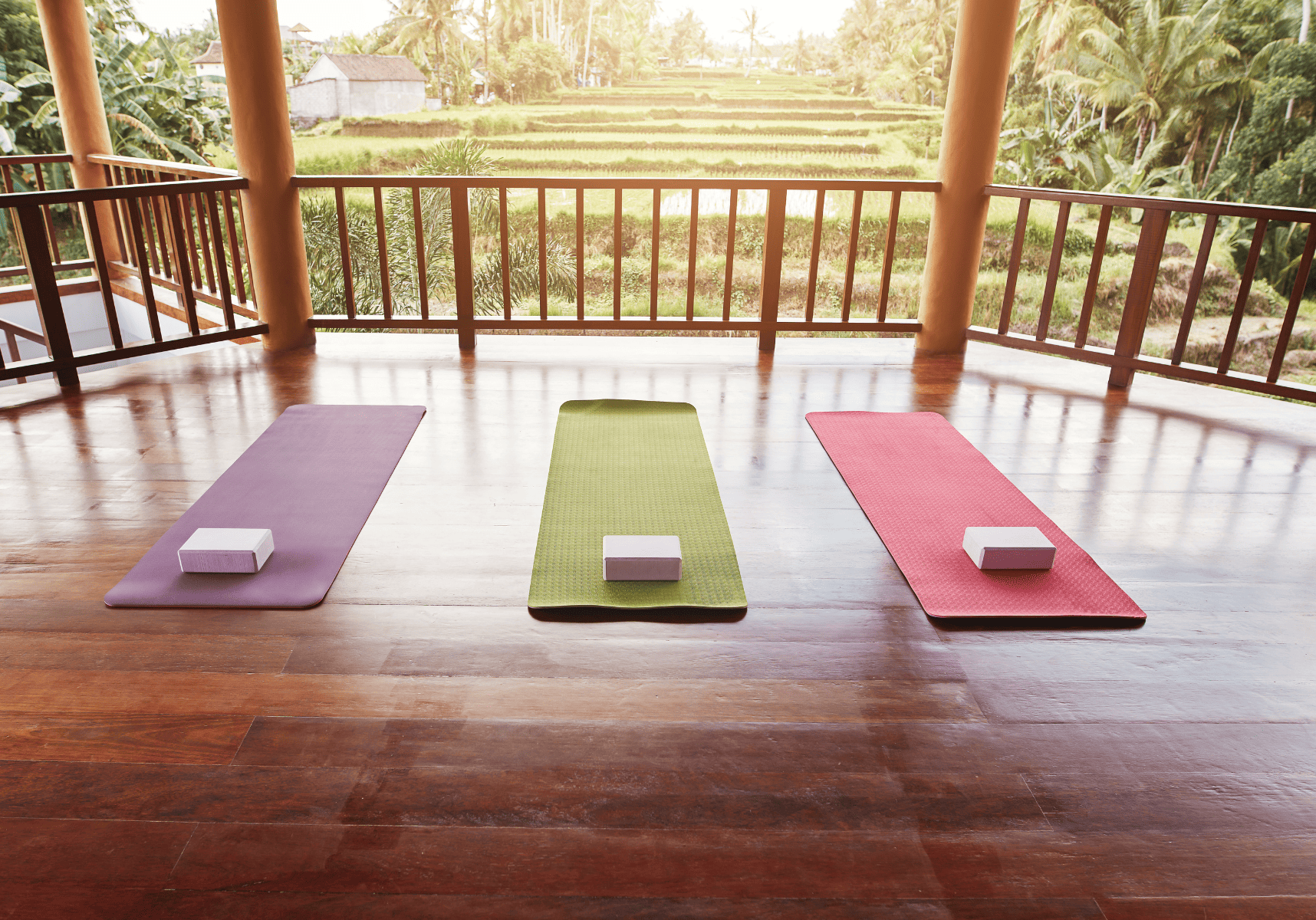
7 Landscaping Ideas To Create an Outdoor Yoga Studio
Landscaping Tips for Creating an Enchanting Outdoor Yoga Sanctuary- By Beth Rush
Reading time: 3 minutes
Yoga becomes enjoyable if you change the scene and move your practice to an outdoor location integrated with more natural elements.
Do you love yoga? Many studio owners began their journey with yoga as a hobby, then later turned it into a lifestyle and a business by having their own yoga studio. You have several reasons to dream about building an outdoor yoga garden. An open-air setting to do your downward dogs and stretches sounds like the ideal place for movement. Plus, a silent space to retreat when you need peace is a haven.
So, how do you make an outdoor yoga space? If you want to move your practice outside the four walls, here are some landscaping tips to guide you.
1. Choose the Right Location
The location is the first thing to consider when choosing a space for your open yoga studio. Choose a spot that offers some privacy, but consider the purpose of creating the space. If you're building an outdoor setting for your students, pick an area where people pass by and catch a glimpse of your activities. It can help promote your business. Otherwise, opt for a secluded and less noisy location. If you need more privacy, put up tall hedges or fences to separate the area from the main residence.
2. Pick a Naturally Lit Zone
Maximize each yoga session by getting all the benefits of an outdoor practice, including natural light. By exposing yourself to early sun rays for 10–30 minutes three times weekly*, you can activate vitamin D production. This nutrient is essential for bone health and helps lower your risk for cancer and depression.
How do you design a yoga studio with the most natural light? Pick an area facing the east where the sun rises to get access to the natural light for an early morning practice. Determine the best direction where you can utilize sunlight.
3. Determine the Size of the Space
Estimate if the space is enough and comfortable for a practice. The last thing you want is a cramped space that restricts the movement of the practitioners. Additionally, choose a layout that allows sufficient elbow room for motions. If this is for personal space,
4. Pick a Flooring Option
The flooring material is crucial for a yoga practice because you usually work on the ground. For a compact and even soil surface, the bare earth may suffice as flooring. You can directly lay the mat* when it's time to practice. But if the base is rocky or uneven, you may need to install a stable and non-slip surface, such as composite deck boards and rubber tiles that seamlessly lock together. Ensure the flooring's safety, too, to avoid accidents.
5. Incorporate Natural Elements
People who spend more time outdoors are less likely to experience feelings of anxiety, stress and depression, which is what your aim for the outdoor studio to be. Create a space where people can immerse in the peace of the moment and feed their mental health.
The best feature of an outdoor studio is the natural elements integrated into the space. Add pot plants and style them based on your preference. You may also use the thriller, filler and spiller concept, where you combine a bold feature plant with two complementary plants to create focal-point planters.
Native and succulent plants are the best options for an outdoor yoga location since they don’t require high maintenance. A few minutes of daily tending is enough to preserve their beauty.
Apart from plants, adding water features can also make the space look more natural and calming. Some refreshing water features are a miniature pond, water fountains, birdbaths and a rock garden. Add colorful fish, pretty plantings and other ornaments to complete the look.
6. Add a Storage for Props
You also need a dedicated space to store the yoga mats, wheels, blocks and straps. Get a simple multi-level rack* and put it under a shade or the eaves and near the outdoor yoga studio. Fold and keep your mat here after every practice.
7. Install Lounging Areas
Finally, furnish the space with wooden benches or seats where students can wait or lounge before and after the session. Take it a step further by installing hammocks or daybeds where they can lie down to relax or meditate. You might not need this if the space is for personal use, but making it as comfortable as possible for others is key to creating a welcoming and serene zone that everyone will enjoy.
Make Your Outdoor Yoga Studio a Dream Come True
The purpose of an outdoor yoga studio is to spend more time in nature. Keep this in mind when setting up an open area for your practice. Create a space where you can enjoy the natural scenery and connect with it. It will help boost your practice.
While there are ideal landscaping practices, consider what feels good when decorating the space. If minimizing potted plants can reduce visual stimulation and declutter your mind — do so. After all, your priority is how the space makes you feel.
*commission earned from this link








